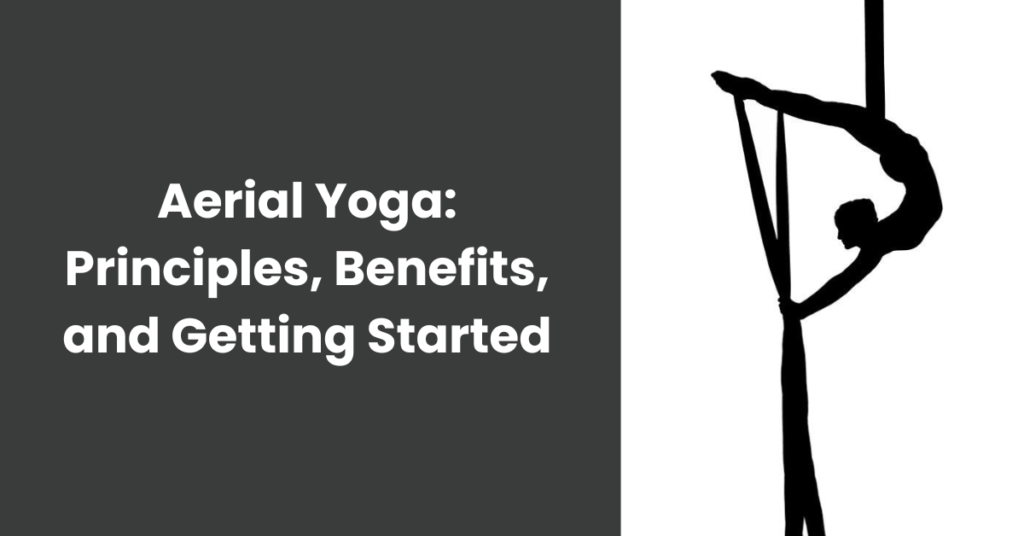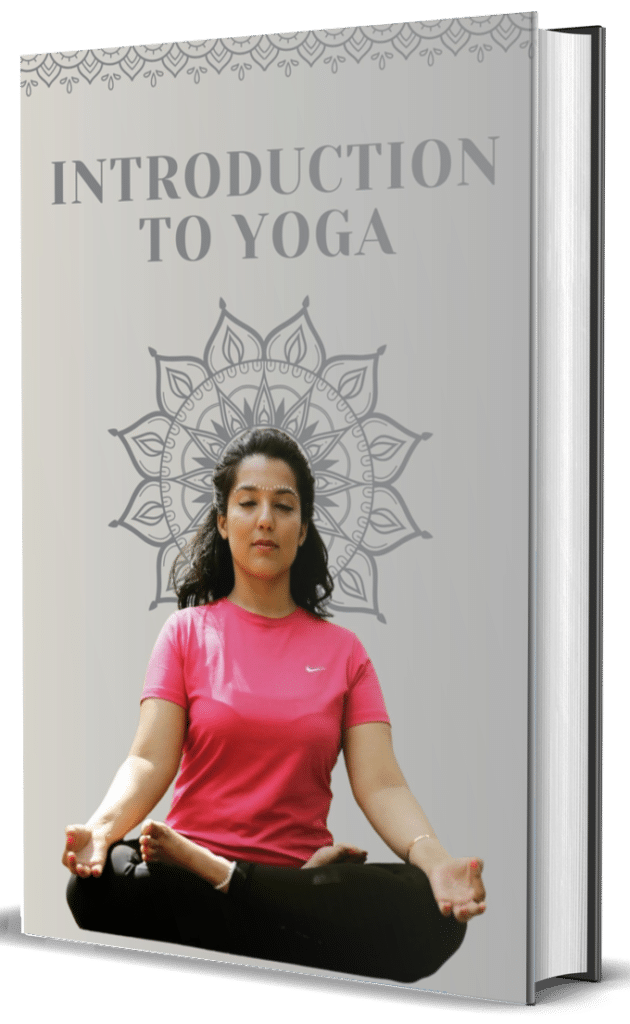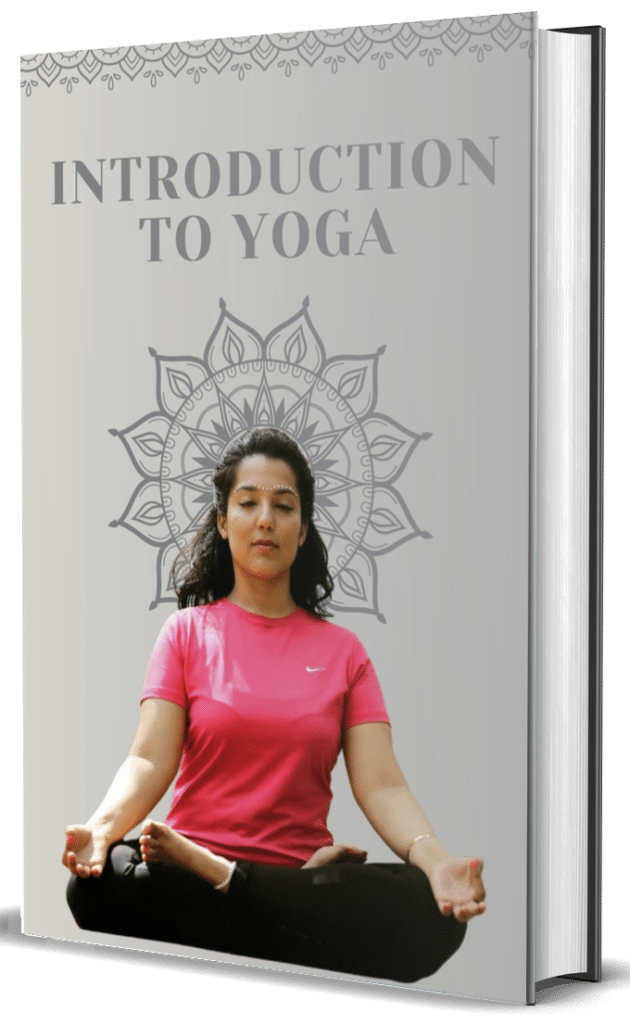- Key Takeaways
- What is Aerial Yoga?
- Benefits of Aerial Yoga
- Essential Equipment for Aerial Yoga
- Getting Started with Aerial Yoga
- Safety First: Important Precautions
- Aerial Yoga Poses and Techniques
- Aerial Yoga for Specific Needs
- Common Misconceptions Debunked
- Conclusion
- Frequently Asked Questions
-
- What is aerial yoga?
- Is aerial yoga suitable for beginners?
- What are the main benefits of aerial yoga?
- What equipment is needed for aerial yoga?
- Is aerial yoga safe?
- Can aerial yoga help with back pain?
- Are there any weight limitations for aerial yoga?
Key Takeaways
- Aerial yoga combines classic yoga with the fun of the silk hammock. This duo increases your flexibility, increases your range of motion and takes the weight off your head and shoulders in poses.
- With regular practice, aerial yoga increases muscular elasticity, develops core strength, enhances blood flow, and boosts spirits and self-esteem by conquering complex asanas.
- Essential gear like a silk hammock, yoga swing, and formfitting clothing such as yoga pants and tops. Accessories, like yoga mats, can offer even more help.
- Sling beginners just need to feel confident in the sling. Don’t eat large meals right before class. Consider removing jewelry, relax, and go out and ask for help from instructors.
- Safety is always top priority. Make sure you are always using equipment correctly, keep a committed Aerial practice at home, and work to master the proper techniques to protect your body from injuries.
- Aerial yoga is adaptable for different needs, including joint issues, injury rehabilitation, and stress relief, with specialized classes available for varied abilities.
Aerial yoga combines traditional yoga poses with the support of a suspended fabric hammock, offering a unique way to enhance flexibility and build strength. This unique practice gives you the opportunity to relieve pressure from joints while enhancing your alignment and stability.
Appropriate for all skill levels, aerial yoga can further combat stress, encouraging the mind and body to relax with soothing movement. Whether you’re new to the practice or more experienced, it’s a diverse practice that nurtures mental and physical health.
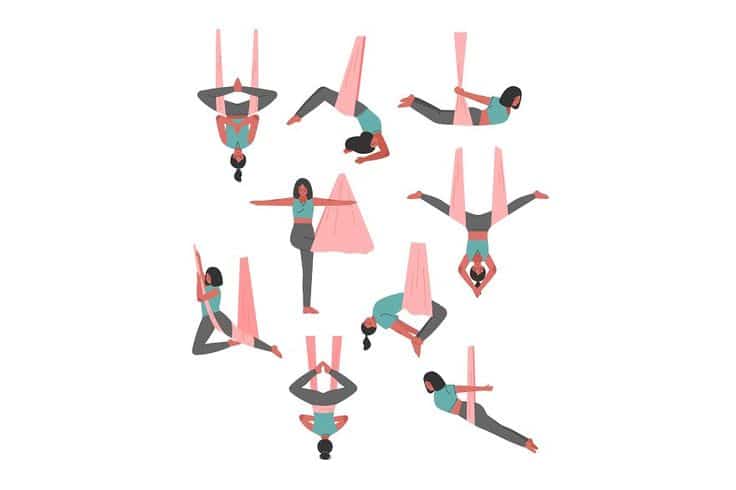
What is Aerial Yoga?
Aerial yoga is an incredibly fun practice in which your body is supported by a silk aerial hammock to help you get into yoga poses and stretches. The hammock cradles your body and deepens your experience. It allows you to go deeper and increase your flexibility.
It reduces the tension that can accumulate in the head, neck, and shoulders in conventional mat poses. This is what makes aerial yoga especially beneficial for those with any joint or spinal condition. This total-body workout efficiently facilitates spinal decompression and improves blood circulation.
It provides the same cardiovascular fitness and calorie-burning benefits as moderate-intensity aerobic exercise. Understanding the weight it can carry in making it accessible to all body types and fitness levels, aerial yoga is an amazing equalizer.
With both therapeutic and fitness-based modifications offered, it’s a safe and fun practice to develop overall strength, balance, and flexibility.
Benefits of Aerial Yoga
Aerial yoga, a practice that marries traditional yoga with the elevated freedom of movement that a hammock brings, is an exhilarating new tutorial to enrich both mind and body. Its low-impact nature makes it perfect for those with joint issues.
In the process, you’ll be able to get in deeper stretches which increase flexibility and overall strength. Similarly, the hammock cradles the body, allowing for more movement and decompression of the spine, helping relieve stress in the back and neck.
Working the deep core muscles through poses is a great way to tone the core and improve circulation, digestion, and elimination along the way. Going deeper, aerial yoga is beneficial beyond the physical realm—simply mastering the complex poses improves mood and self-confidence.
Research shows yoga can help reduce blood pressure and improve cardiovascular health. Offering flexible classes, with restorative styles available, aerial yoga accommodates everyone from beginners to experienced practitioners, all while enhancing balance and coordination.
Essential Equipment for Aerial Yoga
To get the most out of your aerial yoga practice, as well as do so safely, the essential equipment is necessary. In aerial yoga, the main fixture is the silk hammock, made from parachute-grade fabric. These pieces are fluffy and extremely elastic.
They can be as short as 4 m (13 ft.) and as long as 9 m (30 ft.) wide and from 3 m (10 ft.) to 4.5 m (15 ft.) long. For beginners, smaller hammocks such as the 5-meter Dopobo one are more manageable and give you more control over your movements.

Yoga swings, a commercial variation, use handles for more grip and support. Appropriate clothing, such as formfitting shirts and leggings, prevents unsightliness caused by baggy clothes.
Accessories like these mats offer comfort and assistance during supine and seated floor poses. A 2.7-meter ceiling and adequate space around for the safety of practitioners. Hammocks can be hung with daisy chains from beams or trees.
Getting Started with Aerial Yoga
Getting started with aerial yoga is thrilling, but a bit of preparation goes a long way. The biggest challenge with aerial yoga is trusting the sling—after all, it’s literally the thing that will hold up your body weight!
Don’t go into class on an empty stomach or immediately after a large meal. A light snack—think banana—works best. Loose, comfy clothing—think tank top with long sleeve jacket to do some moves that need that flexibility—comfort is key.
Remove jewelry beforehand to avoid getting caught on the hammock. Especially for beginners, relaxation and pacing are key. Most classes are designed for first timers, no experience necessary!
Don’t be afraid to say if you need assistance – instructors are present to provide support. Home practice involves the same setup considerations as mentioned above, needing a ceiling height of 2.7 meters, plus at least 1.5 meters of space all the way around.
As with all adventure, safety first…always!
Safety First: Important Precautions
Aerial yoga needs a professional installation, particularly when it comes to indoor rigs. To reduce harmful hazards, ensure anchor points can support at least 900 kilograms of dynamic load. Engineering textile rope can safely hold around 1,800 kilograms when deployed as a hammock.
Incorporating padding goes a long way in alleviating this strain for those affected by tight fascia or people with sensitive skin. For home practice, ensure a safe practice by bolting the rig/stand to the stable structural base such as a structural beam or pilaster.
Correct form is the name of the game since when you fall or swing, you compound force—causing up to five times your body weight. Whether beginners or advanced practitioners, everyone should be mindful of engaging with trained instructors to ensure safe practice, especially with more advanced poses.
Consider that body weight determines strength needs; the bigger you are, the more preparation you might need to successfully approach advanced postures.
Aerial Yoga Poses and Techniques
Aerial yoga combines elements of classic Hatha Yoga and aerial acrobatics, where students use a hammock to explore and deepen traditional poses. This art form increases flexibility, posture and balance while alleviating tension.
Popular poses include Tree Pose, which opens the hips and improves balance, and Supported Fish Pose, which stretches the chest and shoulders while easing tension. Half Pigeon Pose releases your hips and lower back for deep flexibility.
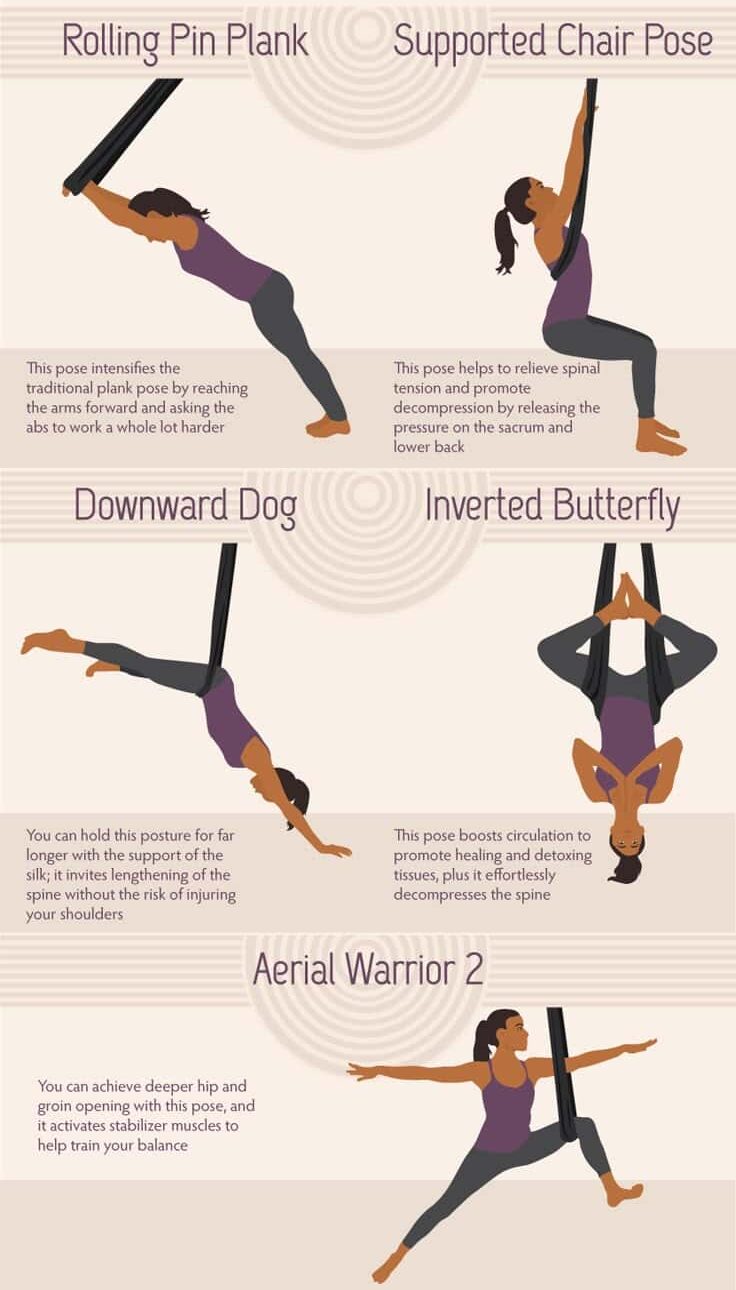
At the same time, Inverted Star Pose fortifies your core and heightens your sense of direction. You’ll be able to modify each pose to your level of strength and flexibility. This opens aerial yoga up to a wider variance of practitioners at any skill level.
Fitness is only one part of it; it promotes confidence, and 80% of participants report feeling empowered after their first class.
Aerial Yoga for Specific Needs
Aerial yoga is incredibly low impact and customizable, allowing anyone with joint replacements or restricted mobility to find comfort within their practice. The supportive hammock provides joint relief by lessening pressure, promoting fluid, soft, low-impact movement. This makes it particularly great for people with arthritis and chronic pain, providing various gentle stretches and increasing overall flexibility.
When it comes to rehabilitation from an injury, aerial yoga poses therapeutic benefits by promoting mindful actions that strengthen tissue and promote healing. Aside from its physical benefits, aerial yoga is extremely beneficial for improving mental health, aiding with anxiety and stress thanks to soothing, meditative postures.
These specialized classes make yoga accessible and inclusive, meeting a variety of specific needs. Jumping, spinning, and swaying in the air can be particularly engaging for children. All kids, especially those with ADHD and autism, thrive on sensory involvement that enhances concentration and motor function.
In much the same way, aerial yoga liberates people with disabilities or other mobility constraints, giving them freedom of movement in a protected, nurturing environment.
Common Misconceptions Debunked
Aerial yoga usually has a reputation of being something for advanced practitioners only. It really is for everybody. Aerial yoga is inclusive to all – no experience necessary, and even if you’ve never worked out a day in your life.
It offers changes that adapt to every level of expertise. Most people believe yoga requires a certain level of experience. This practice is very beginner-friendly and requires you to have a moderate grip strength or crazy flexibility.
Fear or safety is the third concern. Safety is easier to overcome. It’s only a real risk if you fly without quality equipment and expertise.
It’s furthermore not restricted by age. The therapeutic effects of tai chi can help children and seniors alike to build strength and enhance balance.
Beyond physical exercise, it nurtures mental well-being, reducing stress and boosting confidence. Eighty percent of first-time participants report feeling empowered after class.
Conclusion
When done correctly, aerial yoga provides a new approach to movement, stretch and strength building. It merges fitness and relaxation, creating an experience well-suited for first-timers or experienced yoga enthusiasts. Your hammock provides additional support, allowing you to discover poses in a whole new light while minimizing pressure on your joints. Exercise is about more than the time we spend sweating. It’s the chance to move in playful, vibrant ways that leave your spirit soaring.
You don’t have to be on a high level of flexibility or experience to practice. Go at your own pace, be mindful of your body, and have fun! With the proper equipment and instruction, it’s a practice that anyone can do. Looking to try out aerial yoga in your city? Take the plunge and find out how yoga can bring some serious aerialness to your wellness routine with beginner guide!
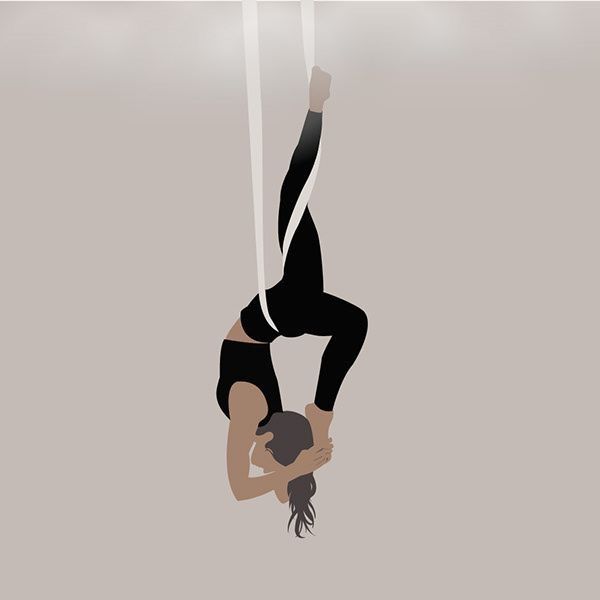
Frequently Asked Questions
What is aerial yoga?
Aerial yoga is a fitness practice that combines traditional yoga poses, pilates, and dance with a hammock or silk suspended from the ceiling. It provides a no-impact alternative to safely and effectively develop flexibility, strength, and balance.
Is aerial yoga suitable for beginners?
Is aerial yoga good for beginners? Most studios have welcome classes specially designed to get you started with the fundamentals. Be sure to take things at your own pace and listen to your instructor to develop and build your comfort level without injury.
What are the main benefits of aerial yoga?
It’s all in the aerial Aerial yoga increases body flexibility, develops core strength, helps with body alignment and posture, and lowers stress. It decompresses the spine, relieving back pain. The suspension component promotes greater alignment, deeper stretches and more core engagement than traditional yoga.
What equipment is needed for aerial yoga?
You’ll require an aerial yoga hammock or silk, safe rigging, and a solid ceiling or stand from which to suspend your apparatus. Wear close-fitting, soft clothes to prevent fabric catches. All studios supply or rent the equipment, so inquire beforehand.
Is aerial yoga safe?
When aerial yoga is done with proper guidance, training, and precautions, it can be practiced safely. Always make sure the hammock is secure when entering and exiting, and pay special attention to the instructor! Don’t do aerial yoga if you have medical conditions that would be aggravated, such as vertigo or advanced joint degeneration, unless approved by your physician.
Can aerial yoga help with back pain?
Can aerial yoga help with back pain relief? Yes, hanging in the hammock helps decompress the spine and take pressure off joints. It encourages improved posture and lengthens shortened muscles. As with any new practice, always check with your healthcare provider before beginning, especially if you have chronic back issues.
Are there any weight limitations for aerial yoga?
Most aerial yoga hammocks can accommodate up to 136 kilograms (300 pounds). Safety is key. Always check the weight limit with your studio or equipment manufacturer before practicing to avoid injury.


